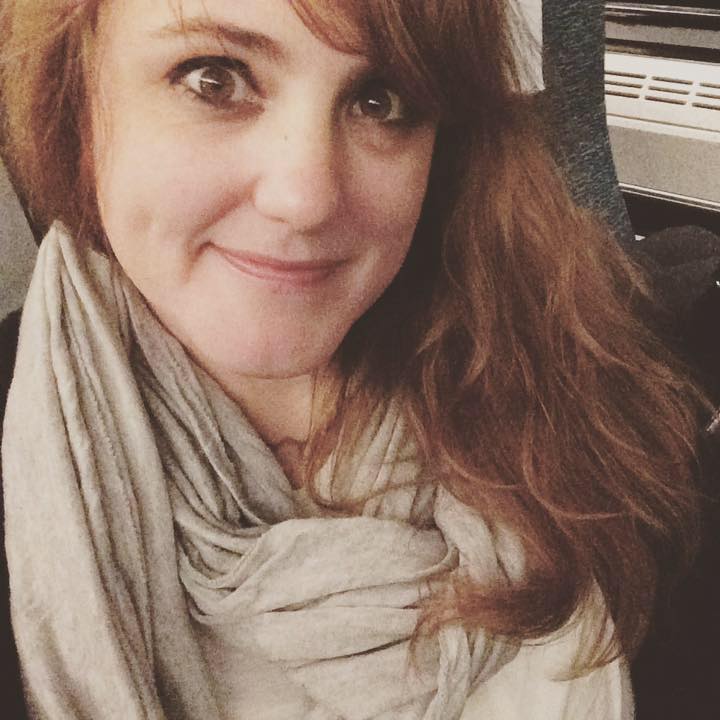All ISEE Middle Level Quantitative Resources
Example Questions
Example Question #9 : How To Find The Distributive Property


(a)
(b)
(a) is the greater quantity
It is impossible to determine which quantity is the greater from the information given
(a) and (b) are equal
(b) is the greater quantity
(b) is the greater quantity
Since 

and

Example Question #961 : Isee Middle Level (Grades 7 8) Quantitative Reasoning


(a)
(b)
It is impossible to determine which is greater from the information given
(b) is the greater quantity
(a) and (b) are equal
(a) is the greater quantity
(b) is the greater quantity




Example Question #301 : Numbers And Operations


(a)
(b)
(a) and (b) are equal
It is impossible to determine which is greater from the information given
(a) is the greater quantity
(b) is the greater quantity
(a) and (b) are equal




Example Question #1 : Whole Numbers
Solve:
We can make a rectangular array using squares to help us solve this problem. Our multiplication problem is 



We can count the squares to find our answer. The correct answer is is
In order to solve this problem using multiplication, we must multiply the multiplier by each digit of the multiplicand to get the answer, which is called the product.
For this problem, 

First, we multiply 
Next, we multiply
Example Question #421 : Common Core Math: Grade 4
Solve:
We can make a rectangular array using squares to help us solve this problem. Our multiplication problem is 



We can count the squares to find our answer. The correct answer is is
In order to solve this problem using multiplication, we must multiply the multiplier by each digit of the multiplicand to get the answer, which is called the product.
For this problem, 

First, we multiply 
Next, we multiply 
Example Question #2 : Whole Numbers
Solve:
We can make a rectangular array using squares to help us solve this problem. Our multiplication problem is 



We can count the squares to find our answer. The correct answer is is
In order to solve this problem using multiplication, we must multiply the multiplier by each digit of the multiplicand to get the answer, which is called the product.
For this problem, 

First, we multiply 
Next, we multiply 
Example Question #422 : Common Core Math: Grade 4
Solve:
We can make a rectangular array using squares to help us solve this problem. Our multiplication problem is 



We can count the squares to find our answer. The correct answer is is
In order to solve this problem using multiplication, we must multiply the multiplier by each digit of the multiplicand to get the answer, which is called the product.
For this problem, 

First, we multiply 
Next, we multiply 
Example Question #2 : Whole Numbers
Solve the following:
We can make a rectangular array using squares to help us solve this problem. Our multiplication problem is 



We can count the squares to find our answer. The correct answer is is
In order to solve this problem using multiplication, we must multiply the multiplier by each digit of the multiplicand to get the answer, which is called the product.
For this problem, 

First, we multiply 
Next, we multiply 
Example Question #423 : Common Core Math: Grade 4
Solve:
We can make a rectangular array using squares to help us solve this problem. Our multiplication problem is 



We can count the squares to find our answer. The correct answer is is
In order to solve this problem using multiplication, we must multiply the multiplier by each digit of the multiplicand to get the answer, which is called the product.
For this problem, 

First, we multiply 
Next, we multiply 
Example Question #424 : Common Core Math: Grade 4
Solve:
We can make a rectangular array using squares to help us solve this problem. Our multiplication problem is 



We can count the squares to find our answer. The correct answer is is
In order to solve this problem using multiplication, we must multiply the multiplier by each digit of the multiplicand to get the answer, which is called the product.
For this problem, 

First, we multiply 
Next, we multiply 
All ISEE Middle Level Quantitative Resources












![\frac{\begin{array}[b]{r}10\\ \times\ 2\end{array}}{\space }](https://vt-vtwa-assets.varsitytutors.com/vt-vtwa/uploads/formula_image/image/1028517/gif.latex)





![\frac{\begin{array}[b]{r}\textup{multiplicand}\\ \times\ \ \ \ \textup{multiplier}\end{array}}{\ \ \ \ \textup{product}}](https://vt-vtwa-assets.varsitytutors.com/vt-vtwa/uploads/formula_image/image/1028522/gif.latex)

![\frac{\begin{array}[b]{r}1{\color{Red} 0}\\ \times\ {\color{Red} 2}\end{array}}{\ \ \ \ 0}](https://vt-vtwa-assets.varsitytutors.com/vt-vtwa/uploads/formula_image/image/1028527/gif.latex)

![\frac{\begin{array}[b]{r}{\color{Red} 1}0\\ \times\ {\color{Red} 2}\end{array}}{\ \ \ 20}](https://vt-vtwa-assets.varsitytutors.com/vt-vtwa/uploads/formula_image/image/1028530/gif.latex)
![\frac{\begin{array}[b]{r}10\\ \times\ 3\end{array}}{\space }](https://vt-vtwa-assets.varsitytutors.com/vt-vtwa/uploads/formula_image/image/1028610/gif.latex)





![\frac{\begin{array}[b]{r}1{\color{Red} 0}\\ \times\ {\color{Red} 3}\end{array}}{\ \ \ \ 0}](https://vt-vtwa-assets.varsitytutors.com/vt-vtwa/uploads/formula_image/image/1028616/gif.latex)
![\frac{\begin{array}[b]{r}{\color{Red} 1}0\\ \times\ {\color{Red} 3}\end{array}}{\ \ \ 30}](https://vt-vtwa-assets.varsitytutors.com/vt-vtwa/uploads/formula_image/image/1028618/gif.latex)
![\frac{\begin{array}[b]{r}10\\ \times\ 4\end{array}}{\space }](https://vt-vtwa-assets.varsitytutors.com/vt-vtwa/uploads/formula_image/image/1028751/gif.latex)





![\frac{\begin{array}[b]{r}1{\color{Red} 0}\\ \times\ {\color{Red} 4}\end{array}}{\ \ \ \ 0}](https://vt-vtwa-assets.varsitytutors.com/vt-vtwa/uploads/formula_image/image/1028757/gif.latex)
![\frac{\begin{array}[b]{r}{\color{Red} 1}0\\ \times\ {\color{Red} 4}\end{array}}{\ \ \ 40}](https://vt-vtwa-assets.varsitytutors.com/vt-vtwa/uploads/formula_image/image/1028759/gif.latex)
![\frac{\begin{array}[b]{r}11\\ \times\ 5\end{array}}{\space }](https://vt-vtwa-assets.varsitytutors.com/vt-vtwa/uploads/formula_image/image/1028631/gif.latex)






![\frac{\begin{array}[b]{r}1{\color{Red} 1}\\ \times\ {\color{Red} 5}\end{array}}{\ \ \ \ 5}](https://vt-vtwa-assets.varsitytutors.com/vt-vtwa/uploads/formula_image/image/1028640/gif.latex)
![\frac{\begin{array}[b]{r}{\color{Red} 1}1\\ \times\ {\color{Red} 5}\end{array}}{\ \ \ 55}](https://vt-vtwa-assets.varsitytutors.com/vt-vtwa/uploads/formula_image/image/1028642/gif.latex)
![\frac{\begin{array}[b]{r}11\\ \times\ 6\end{array}}{\space }](https://vt-vtwa-assets.varsitytutors.com/vt-vtwa/uploads/formula_image/image/1028647/gif.latex)





![\frac{\begin{array}[b]{r}1{\color{Red} 1}\\ \times\ {\color{Red} 6}\end{array}}{\ \ \ \ 6}](https://vt-vtwa-assets.varsitytutors.com/vt-vtwa/uploads/formula_image/image/1028653/gif.latex)
![\frac{\begin{array}[b]{r}{\color{Red} 1}1\\ \times\ {\color{Red} 6}\end{array}}{\ \ \ 66}](https://vt-vtwa-assets.varsitytutors.com/vt-vtwa/uploads/formula_image/image/1028655/gif.latex)
![\frac{\begin{array}[b]{r}11\\ \times\ 4\end{array}}{\space }](https://vt-vtwa-assets.varsitytutors.com/vt-vtwa/uploads/formula_image/image/1028688/gif.latex)





![\frac{\begin{array}[b]{r}1{\color{Red} 1}\\ \times\ {\color{Red} 4}\end{array}}{\ \ \ \ 4}](https://vt-vtwa-assets.varsitytutors.com/vt-vtwa/uploads/formula_image/image/1028694/gif.latex)
![\frac{\begin{array}[b]{r}{\color{Red} 1}1\\ \times\ {\color{Red} 4}\end{array}}{\ \ \ 44}](https://vt-vtwa-assets.varsitytutors.com/vt-vtwa/uploads/formula_image/image/1028696/gif.latex)
![\frac{\begin{array}[b]{r}12\\ \times\ 4\end{array}}{\space }](https://vt-vtwa-assets.varsitytutors.com/vt-vtwa/uploads/formula_image/image/1028763/gif.latex)






![\frac{\begin{array}[b]{r}1{\color{Red} 2}\\ \times\ {\color{Red} 4}\end{array}}{\ \ \ \ 8}](https://vt-vtwa-assets.varsitytutors.com/vt-vtwa/uploads/formula_image/image/1028769/gif.latex)
![\frac{\begin{array}[b]{r}{\color{Red} 1}2\\ \times\ {\color{Red} 4}\end{array}}{\ \ \ 48}](https://vt-vtwa-assets.varsitytutors.com/vt-vtwa/uploads/formula_image/image/1028770/gif.latex)



